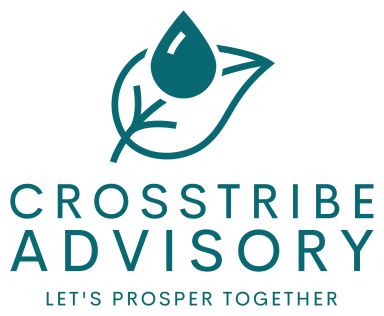Should a Nonprofit Organization Change Auditors?
Auditor Effectiveness is More Important than Auditor Rotation
A best practice that came into vogue with the Sarbanes-Oxley Act of 2002 (SOX) is a frequently discussed topic in nonprofit board rooms and audit committees:
Should nonprofits swap out auditors every so often?
Sarbanes-Oxley became law in response to financial scandals in the early 2000s and only requires that publicly traded companies rotate lead auditors every five years, not change audit firms entirely. This requirement is not imposed on nonprofits, so no, there is no requirement in the law to change audit firms.
Let’s get some background on this practice and then understand how to apply it in a nonprofit context.
Legislation is a Poor Substitute for Professional Integrity
The SOX requirement for audit firms to rotate lead auditors is a response to critical failures in the Enron implosion in 2001. The audit firm, Arthur Anderson, developed significant economic bonds with Enron through sizable consulting contracts that impaired their judgement as auditors. Enron recruited from the ranks of auditors who worked on their audit and lines blurred as friends on both sides socialized together and failed to maintain independence in fact or appearance. Ultimately, because of the actions of these bad actors, the auditors became a key enabler of Enron’s fraud.
When professional standards are observed, there are benefits to long-term relationships. Nonprofit finance directors are reluctant to change auditors because bringing a new firm up to speed takes time and wastes the knowledge the former auditor has accumulated over their tenure. For example, Proctor & Gamble (P&G) has stuck with Deloitte & Touche since 1890, indicating that sufficient internal controls exist such that firm rotation would not enhance independence, but only serve to decrease audit quality due to the deep knowledge that would be lost. General Electric (GE) also enjoyed a long-term relationship until an audit failure forced a change. They parted ways with KPMG in 2020 after 109 years only after the rise of criminal and regulatory probes into its accounting practices that KPMG failed to cite.
Internal Controls are Great When They’re Observed
It’s interesting to contrast P&G and GE, because the difference comes down to the failure of those involved to fulfill their roles in the internal control process. GE management was responsible for applying internal control procedures and KPMG auditors were responsible for testing them.
Provided that the nonprofit has strong internal controls, the rotation of the lead auditor every so often should resolve concerns of auditor independence. As noted by the National Council of Nonprofits, “The periodic rotation of the individual who is the lead auditor can ensure that the eyes of those examining the nonprofit’s financial records are fresh, and less likely to overlook something just because of a long-standing relationship with the nonprofit as a client.”
A Robust Audit Committee is Key
So, while there is no legal requirement for nonprofits to change auditors periodically, the question highlights issues that boards and their audit committees must address to maintain an effective relationship with their audit firm.
The audit committee has been aptly described as the conscience of the organization. As such, it is important that committee members are also independent of the organization, not accepting compensation and not related to any employees.
The audit committee is truly a working committee that calls for the active engagement of key stakeholders who strive to acquire a good working understanding of the organization’s activities, revenue drivers and business risks, and understand their related controls. Describing the role of the audit committee is so expansive that it deserves an article of its own. Here are just a few key tasks to consider tuning up your audit committee:
Meet with the auditor at least two times a year. First, to review the plan for upcoming audit where the auditor may share their proposed audit scope and approach. Second, to review the results after the audit and inquire regarding any changes to the audit plan that may have transpired. You’ll also review the draft audit report paying particular attention to footnote disclosures and any updates in accounting standards that are reflected in the report.
Always have a private session with the auditor without management present as part of the annual wrap up process. The audit committee should be able to discuss issues in confidence so that any conflicts or difficulties with management that arose can be discussed freely.
Following the conclusion of the audit, deliberate as a committee on the retention or dismissal of the auditor for the following year’s audit.
Review and approve the auditor’s fees, including any additional work unrelated to the audit.
Ask the audit firm to share their peer review letter. Audit firms are required to undergo peer review, which examines the quality of their work and helps assure clients that they’re getting a good product.
Search for potential conflicts of interest. Consider whether business or family relationships exist that may impair auditor independence.
These are just a few suggestions that will help your audit committee operate more robustly and in turn, help assure the effectiveness of your audits.
Let’s Prosper Together
With 3 decades of deep nonprofit experience, we can help you realize sound financial practices so that your audits can be more effective and affordable. We can help you clean up your books, prepare audit workpapers and consult with your board and audit committee, so that you can be free to focus on advancing your mission.
If you need someone to be a support and hold the ropes while you tend to your highest and most valuable tasks, let’s talk. You can reach Jim Cross at 937-234-7780 or jim@crosstribe.net.
Must we change auditors periodically? | Nonprofit Issues
Enron, Ep 5: The Enablers - Bad Bets - WSJ Podcasts
P&G Explains Why It's Had the Same Auditor for a Century - WSJ
GE Names New Auditor For The First Time In Over A Century (forbes.com)
Step 1: Selecting an Audit Firm | National Council of Nonprofits

©Copyright. All rights reserved.
We need your consent to load the translations
We use a third-party service to translate the website content that may collect data about your activity. Please review the details in the privacy policy and accept the service to view the translations.
